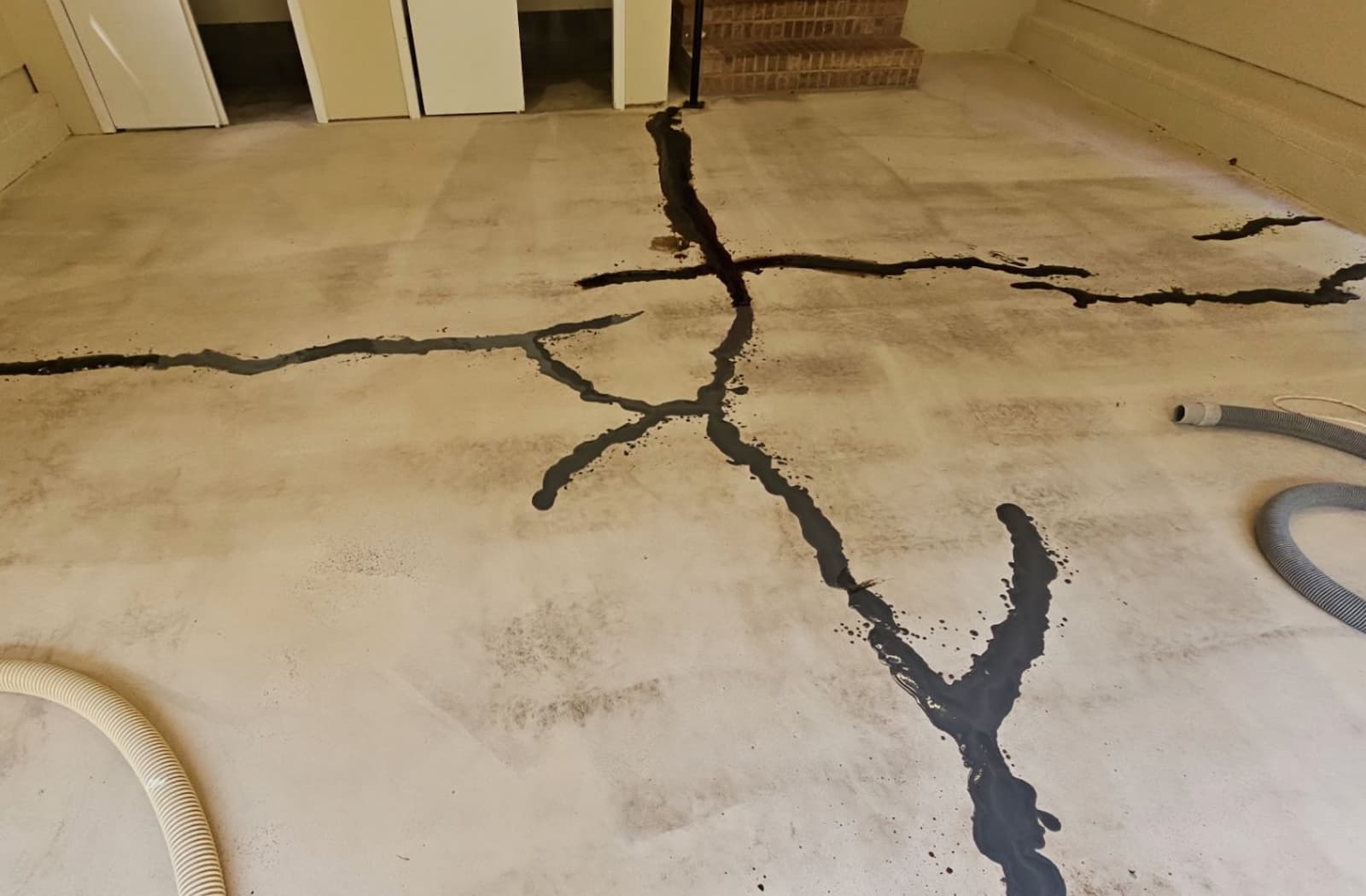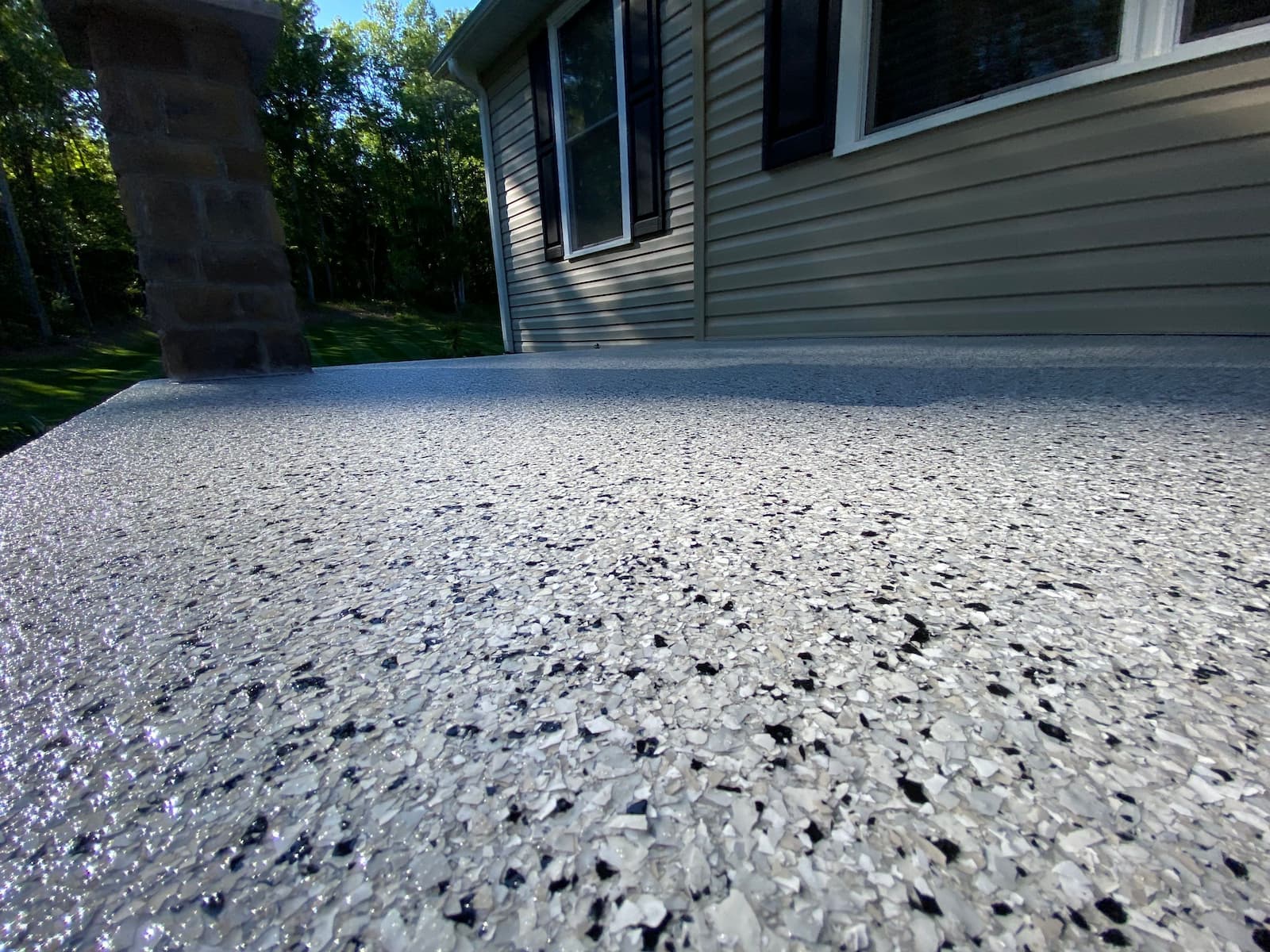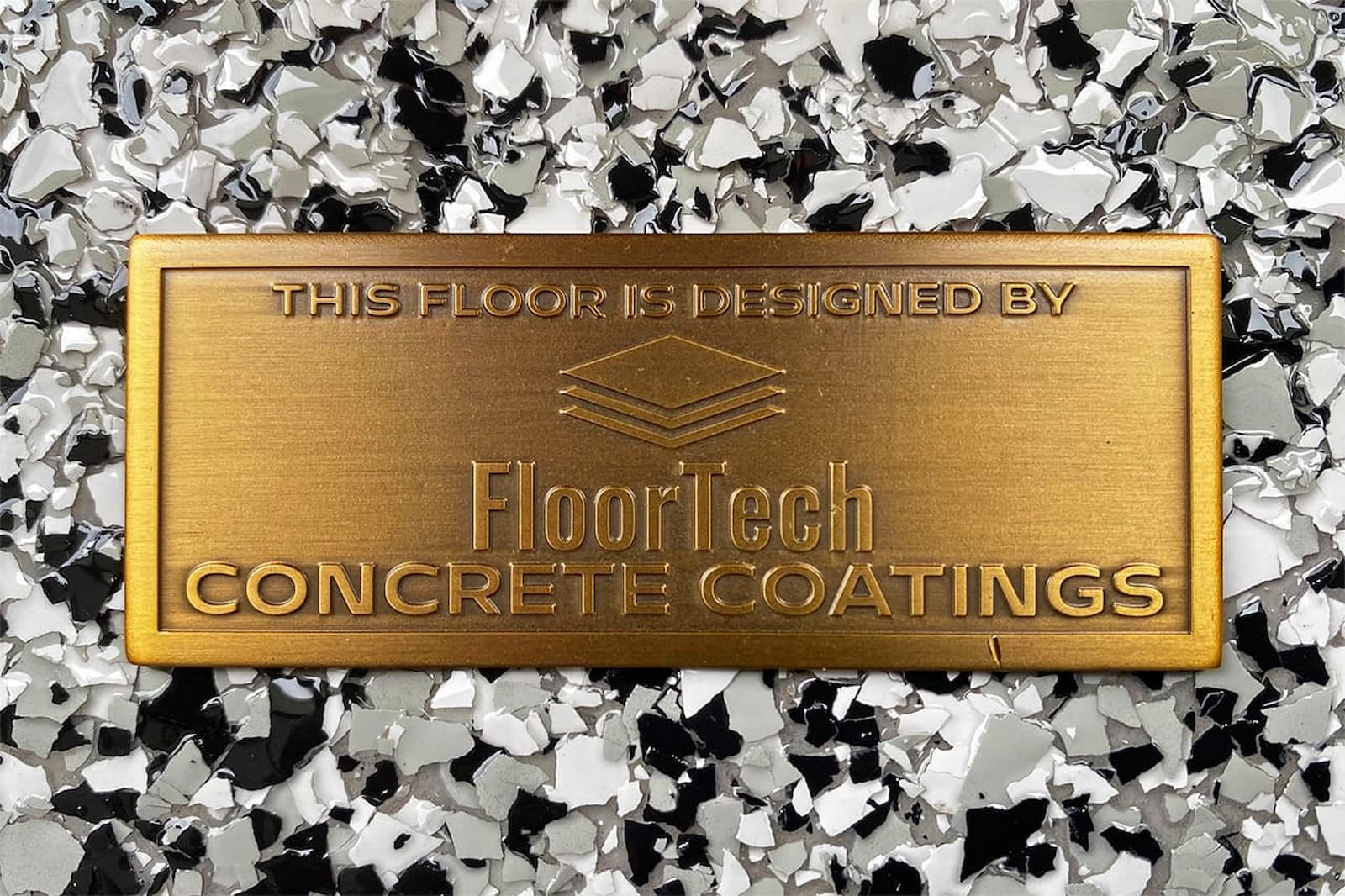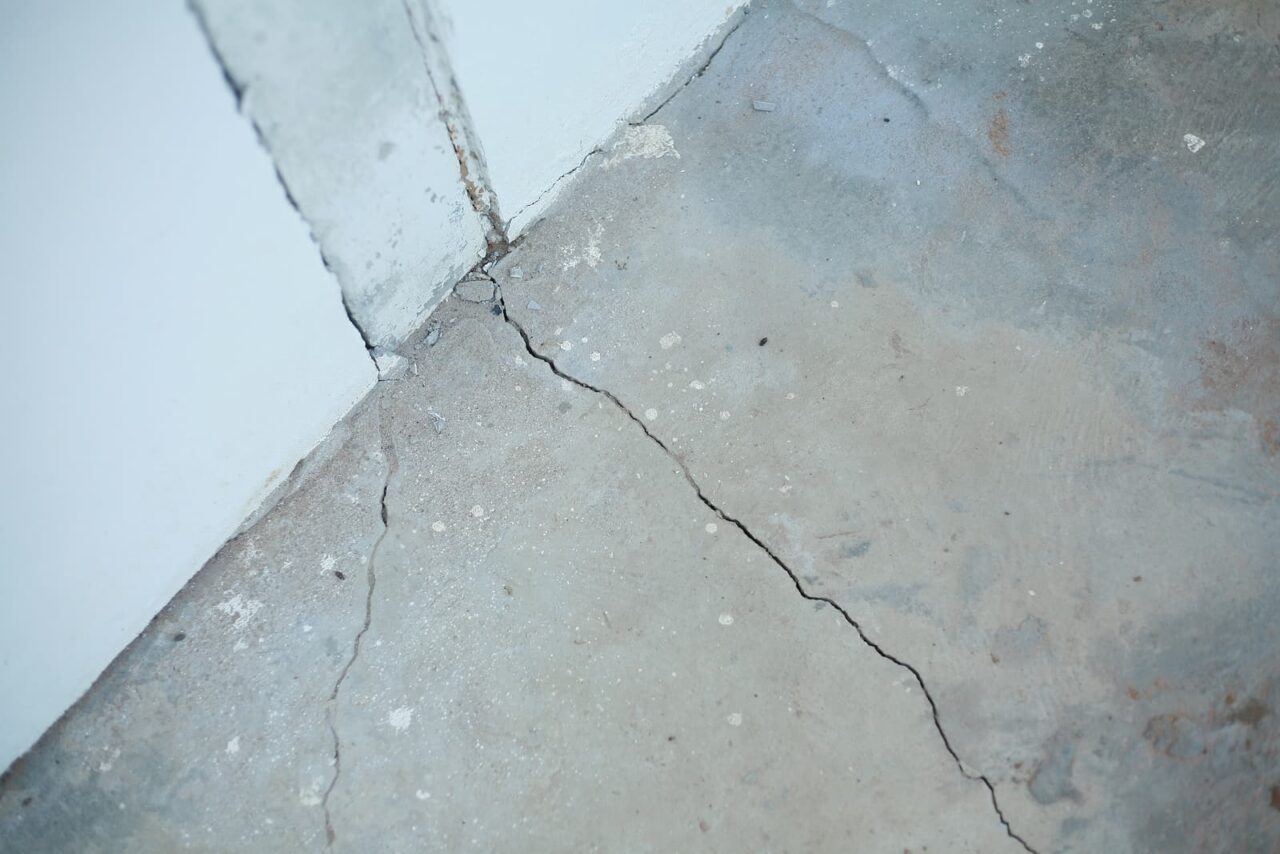Do You Repair Damaged Concrete and Cracks Before Applying a Coating?
At FloorTech Concrete Coatings, one of the most common questions we get is, “Do you repair damaged concrete and cracks before applying a coating?” The answer is a big YES!
Whether you’re dealing with hairline cracks, large fractures, spalling, or pitting, repairing your concrete is a crucial step before any coating goes on. Think of it this way: just like prepping a wall before painting, fixing and prepping your concrete makes all the difference when it comes to how your new coating will look and how long it will last.
Let’s dive into why this process is so important and what types of repairs we handle to ensure your floor looks its best.
Why Concrete Repair is Crucial Before Coating
Imagine slapping a fresh coat of paint over a wall full of cracks and bumps—it wouldn’t look great, right? The same goes for your concrete floor. Damaged concrete can significantly affect the outcome of the coating. Uneven surfaces, cracks, and erosion not only look bad but can cause the coating to wear out faster and fail to bond properly.
By taking the time to repair the concrete first, you’re ensuring that the coating adheres properly, lasts longer, and looks flawless. At FloorTech, we give the same careful attention to concrete prep as we do to the actual coating. Because in the end, the time spent on repairs pays off in a smoother, longer-lasting finish.

What Types of Damage Do We Repair?
No matter what condition your concrete is in, we’ve got it covered. Here’s how we tackle the different types of damage you might be dealing with:
1. Minor Cracks (Hairline Cracks)
Hairline cracks are pretty common in concrete surfaces, but don’t worry—we fill these tiny cracks so that they don’t interfere with the finish of your floor. Even though they may seem insignificant, ignoring these small cracks can result in bigger problems down the road.
2. Major Cracks
If you’ve got large cracks or structural damage, we address those too. These bigger cracks need special attention to ensure stability before the coating is applied. We use high-quality materials to seal and repair them, making sure your floor is solid and ready for its makeover.
3. Spalling or “Pop-Outs”
Spalling (or “pop-outs”) happens when the surface of the concrete starts to flake or chip away. If left untreated, this can create uneven areas that can ruin the look of your new coating. We smooth out these rough spots and fix the damage to ensure a perfectly level surface.
4. Pitting and Concrete Erosion
Pitting and erosion can make concrete look like it’s been through the wringer. If you’ve got concrete that’s seen better days, we’ll fill and repair the pits to restore the surface to like-new condition. This gives your coating the smooth, clean foundation it needs to really shine.
Preparation is Key: The Process
The secret to a beautiful, long-lasting concrete coating isn’t just the quality of the coating itself—it’s all about preparation. We believe the foundation is everything, and that’s why we spend as much time prepping the surface as we do applying the coating.
Our process involves:
- Thorough surface cleaning to remove any dirt, debris, or oil that could interfere with the coating.
- Repairing cracks, spalling, and pitting, ensuring the concrete is smooth and stable.
- Grinding or smoothing the surface to create the perfect texture for the coating to adhere.
- Filling any imperfections to create a flawless finish.
Just like when you prep a wall before painting, these steps are key to ensuring that your concrete floor looks incredible and lasts for years.

Why It Matters: The Benefits of Proper Concrete Repair
Taking the time to properly repair your concrete offers a ton of benefits:
- Enhanced Appearance: When the surface is smooth and even, the final coating looks polished and professional.
- Longevity and Durability: A well-prepped surface ensures the coating will bond properly and last much longer, resisting wear and tear.
- Improved Bonding: Fixing damage before applying the coating allows for a stronger bond between the concrete and the coating material, reducing the risk of peeling or cracking later on.
Understanding Your Coating Options
Once your concrete is perfectly repaired, it’s time to choose your coating. We specialize in both epoxy and polyurea coatings, so let’s take a quick look at what each has to offer:
Epoxy Coatings
Epoxy is a popular option because it’s durable and has a nice shiny finish. It’s a polymer, kind of like what gives rubber bands their stretch or makes certain shoe soles flexible. However, epoxy only bonds to the surface of the concrete. Over time, it can be prone to peeling or cracking if the concrete underneath isn’t properly repaired or if the surface shifts.
Polyurea Coatings
Polyurea, on the other hand, offers deeper protection by forming a strong chemical bond with the concrete. It’s much more durable and flexible than epoxy, making it a great option for high-traffic areas or places where the concrete may expand and contract with temperature changes.
Polyurea is perfect for long-lasting protection, especially when applied to a well-prepped and repaired surface. If you’re looking for something that can withstand the elements and daily wear and tear, polyurea is the way to go.

Our Recommended Coating System: Penntek’s Pure Polyurea
At FloorTech, we use Penntek’s Pure Polyurea system, which combines the best of both worlds. We start with an aromatic polyurea basecoat, known for its durability, and finish with a polyaspartic aliphatic polyurea topcoat, which adds UV resistance and a glossy finish.
Compared to traditional epoxy, Penntek’s Pure Polyurea is four times stronger and ten times more flexible. This means it’s not only more durable, but it’s also resistant to chipping, cracking, and peeling. And since it forms a deep chemical bond with the concrete, you’ll have peace of mind knowing it will last for years to come.
DIY vs. Professional Concrete Repair and Coating
Sure, there are DIY epoxy kits out there, but the truth is, concrete repair and coating is best left to the pros. DIY kits can’t match the quality of professional-grade materials, and without proper surface preparation, your coating might not last as long as you’d hope.
At FloorTech, we’re certified Penntek installers, and we bring years of expertise to every project. We repair your concrete, prepare the surface meticulously, and apply a top-tier polyurea coating that’s designed to stand the test of time.
Conclusion
In summary, repairing damaged concrete is a vital first step before applying any coating. Whether you’re dealing with minor cracks or major damage, the right repairs will ensure that your floor not only looks amazing but also stands up to daily wear and tear for years to come.
If you’re ready to give your concrete floors a fresh, flawless finish, contact us at FloorTech Concrete Coatings. Our team is here to repair, prep, and coat your concrete with expert care—so you can enjoy a beautiful, durable floor that’s built to last.







